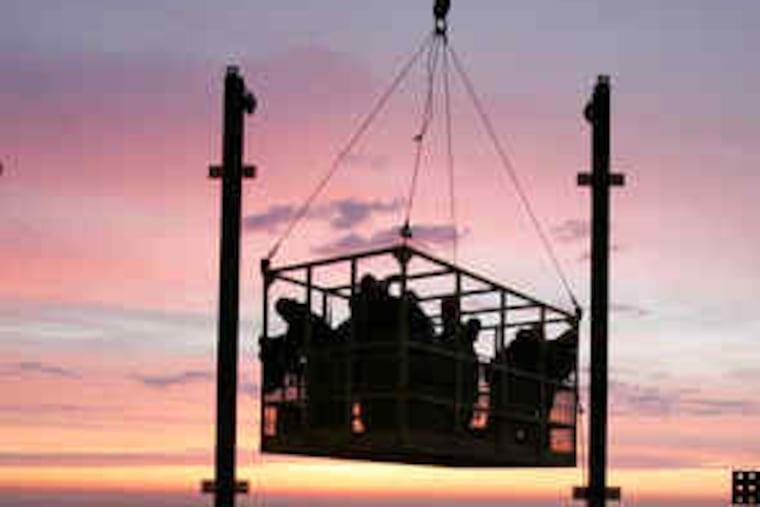LOOKING AT THE CITY'S FUTURE
If you worry about the future of Philadelphia, here's some good news: Philadelphia isn't Miami. And it's not Las Vegas.

If you worry about the future of Philadelphia, here's some good news:
Philadelphia isn't Miami. And it's not Las Vegas.
It's not tethered to a single-domain economy, such as tourism or gambling.
When Environmental Graffiti picked the places most likely to become "lost cities," that is, cities that eventually cease to exist, like ancient Mayan civilizations, Las Vegas topped the list, because of its lack of water. And Miami finished fourth, because of too much water - a city poised to be swamped by rising oceans.
In Philadelphia, we can cross dehydration and drowning off the list of worries.
Which is not to say the Philadelphia of the future won't have problems, and that some of the biggest won't be the same ones that plague us now. Crime and schools, anyone? Peer ahead 20 years, to 2029, when The Inquirer will turn 200, and although you'll still recognize the city, it's going to look different.
Temple University urban studies professor David Bartelt, who helps run the Metropolitan Philadelphia Indicators Project, expects a radical change in what we define as Center City.
In 20 years, that core may extend deep into West Philadelphia, encompassing the University of Pennsylvania, and as far north on Broad Street as Temple University. New condominiums and offices are already pushing across the Schuylkill and past Spring Garden Street.
In 20 years, say people who think about the future, we'll still be talking about what to do with the riverfront. We'll still want to get rid of the city-slicer that is I-95 - and there still won't be anybody who knows where else to put it.
More and more, the problems of the city will become the problems of the suburbs, and vice versa.
Pat Clark of Pittsburgh-based Jackson/Clark Partners spends time thinking about "a time when the suburbs will shrink, the cities will grow."
It's not as far-fetched as it sounds. If energy costs explode, making it too expensive to live in communities where cars are mandatory, it could push people into the cities, a shift abetted by a move toward a greener, less-consumptive society.
"What you don't want to happen is the reverse of sprawl - whatever that will be called," said Clark, whose firm promotes change in housing, jobs and transportation. "You've got to prepare for it. And the cities that prepare for it are going to be the ones that succeed."
If energy costs remain stable, then the big Eastern cities - Philadelphia included - will continue to get smaller. The city population peaked in 1950 at 2,071,605, dropping steadily to an estimated 1,447,495 last year.
But getting smaller isn't necessarily bad. There's nothing wrong with being a city of a million or so - if you have the tax base to provide services. And being a city that was built for a larger population can offer advantages, in the form of old mill and warehouse space that can be turned to new uses.
People who think about the future say they wouldn't be surprised to see some of that space converted for new green-economy companies that would do what Philadelphia used to do: Make things.
Diana Lind, editor of Next American City magazine, said the ugly truths of the credit and housing collapse have put an end to the idea that wealth can or should come from nothing, from the ability of intelligent people to manipulate sophisticated financial instruments.
"Cities that actually produce tangible objects may become more in vogue," said Lind, whose quarterly magazine is based in Philadelphia. "Some of the dominance of New York and L.A. may flip."
All of this comes with a caveat, of course. Philadelphia already bombed with its trendy plan to go wireless. And every prediction about the future is subject to the eruption of game-changing innovations.
Bartelt likes to point out that in 1950, the city planning commission made its own projection of the future: In the year 2000, Philadelphia would have a population of three million.
Actually, it was half that.